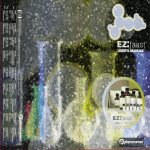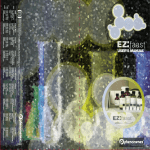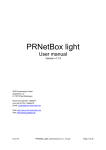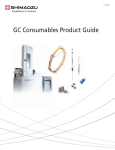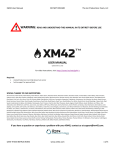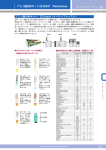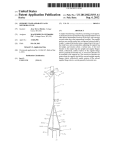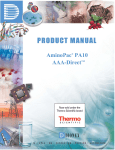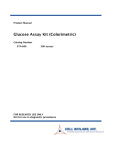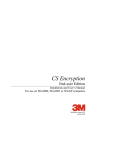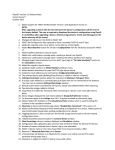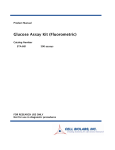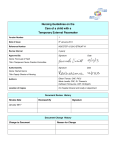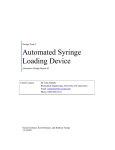Download USER`S MANUAL
Transcript
�����
�����
����
������
���
���������������
������������
����������
���
��������������
��������������
�����
��������������
�����������
������������������
����������
���������
�����������������
��������������
��������������
�����
��������������
������
���������������
������������
����������
���
��������������
��������������
�����������
��������������
������
������������������������
������������������������
�������������������
����������
������������
������������
�������
��������������
��������������
��������������
��������������������
����������������������
������������
�����������
���������������
���������
��������������
�������
��������������
��������������������
����������������������
������������
�������������
��������������
��������
��������������
�������
��������������
�������������������
�������
����������
����������
�����
����������������
�����������
�������������
�������
��������
�����������
������������
������������
�����
�����������������
���������
�����������
�������������������
���������
������������������
����������������������������������������������������������������������������������
�����������������������������������������������������������������������������������������������������������
��������������
��������������
�����
��������������
3882_L
USER’S MANUAL
by LC-MS
USER’S MANUAL
For Part Numbers
KH0-7339
KH0-7340
Phenomenex Ltd. Deutschland
Zeppelinstr. 5
63741 Aschaffenburg
Deutschland
411 Madrid Ave
Torrance, CA 90501-1430
USA
I
3882_L6
of Protein Hydrolysates
For Amino Acid Analysis of Protein Hydrolysate by LC-MS
Amino Acid Analysis
User’s Manual
The following is a description of the symbols used in the EZ:faast manuals,
on EZ:faast packaging, and on EZ:faast kit components.
Symbol for “In Vitro Diagnostic Medical Device”
Symbol for “Manufacturer”
Symbol for “Authorised Representative In
The European Community”
Symbol for “Use By” and/or “Expiration Date”
Symbol for “Batch Code” and/or “Lot Number”
Symbol for “Catalogue Number”
Symbol for “Serial Number”
Symbol for “Flammable Substances”
Symbol for “Irritating or Harmful Substances”
Symbol for “Corrosive Substances”
II
User’s Manual
TABLE OF CONTENTS
Kit Components ..........................................1
Overview ....................................................2
Sample Preparation Procedure....................5
LC/MS Analysis .........................................12
Sample Storage and Stability ....................16
Cleaning and Care of Supplies ..................16
Quality Assurance .....................................17
Product Limitations ...................................18
Ordering Information ........................... 19-20
III
User’s Manual
1.0 KIT COMPONENTS
1.1 Reagents
Reagent
Ingredients
Volume
Reagent 1
Internal Standard Solution
Homoarginine 0.2 mM
Methionine-d3 0.2 mM
Homophenylalanine 0.2 mM
50mL
Reagent 2
Sodium Carbonate Solution
Na2CO3
90mL
Reagent 3A
Eluting Medium Component I
Sodium Hydroxide
60mL
Reagent 3B
Eluting Medium Component II
N-propanol
40mL
Regent 4
Organic Solution I
Chloroform
4 vials, 6mL each
Reagent 5
Organic Solution II
Iso-octane
50mL
SD
Protein Amino Acid Standard
Mixtures
Please refer to section 4.6 in
the manual
2 vials, 2mL each
1.2 Supplies
Sorbent tips in racks ............................................................................................. 4x96
Sample preparation vials ....................................................................................... 4x100
Microdispenser, 20-100µL ..................................................................................... 1
Syringe, 0.6mL ...................................................................................................... 10
Syringe, 1.5mL ...................................................................................................... 10
EZ:faast AAA HPLC Column .................................................................................... 1
Autosampler vials with inserts ............................................................................... 4x100
User Manual .......................................................................................................... 1
EZ:faast Demo Video and Reference CD ................................................................. 1
1.3 Materials Required but Not Supplied In Kit
• 100µL-1mL pipette (SoftGrip™ pipette [Phenomenex P/N AH0-5968] or equivalent)
• 30-300µL pipette (SoftGrip™ pipette [Phenomenex P/N AH0-5967] or equivalent)
• 10-100µL pipette (SoftGrip™ pipette [Phenomenex P/N AH0-5966] or equivalent)
• Pipette tips (Phenex™ [Phenomenex P/N AH0-5917 (200µL) and AH0-5920 (1mL)]
or equivalent)
• Vortex
• Vials of an appropriate volume, with caps (see section 3.2)
• Pasteur pipettes for sample transfer (see section 3.4 step 15)
• Container for proper waste disposal
• Reagents and supplies for Protein Hydrolysis
1
User’s Manual
2.0 OVERVIEW
2.1 Overview
The EZ:faast amino acid analysis procedure consists of a solid phase extraction step
followed by a derivatization and a liquid/liquid extraction; derivatized samples are quickly analyzed by liquid chromatography-mass spectrometry. The solid phase extraction is performed
via a sorbent packed tip that binds amino acids while allowing interfering compounds to flow
through. Amino acids on sorbent are then extruded into the sample vial and quickly derivatized
with reagent at room temperature in aqueous solution. Derivatized amino acids concomitantly
migrate to the organic layer for additional separation from interfering compounds. Organic
layer is then removed, evaporated, and re-dissolved in aqueous mobile phase and analyzed
on a LC/MS system. Total sample preparation time takes around 8 minutes and analysis is
performed in around 12 minutes for a total start to finish time of around 20 minutes.
A video included with this kit demonstrates the simplicity of the procedure. Please be
aware that some sample preparation steps described in the video may be different than what
is described in this users manual. Please use the video as a general guide, but follow the exact
steps and sequence described in this manual.
2.2 Amino Acids in Physiological and Protein Hydrolysate Samples
The EZ:faast method has been developed for the analysis of amino acids from protein hydrolysates (Table 1). In total, over 60 aliphatic and aromatic amino acids or related compounds
can be analyzed with this kit (Table 2). Additional amino acids and related compounds may
be analyzed with this kit. A brief adjustment of chromatographic and MS conditions may be
required. Please contact your Phenomenex technical consultant for method modifications and
other LC and GC amino acid kits.
Table 1 - Protein Amino Acids analyzed by the EZ:faast Hydrolysate Amino Acid Analysis Kit by LC/MS
Chemical Name
Alanine
Arginine
Asparagine
Aspartic Acid
Cystine
Glutamine
Glutamic Acid
Histidine
Hydroxylysine (2 isomers)
4-Hydroxyproline
Isoleucine
Leucine
Lysine
Methionine
Phenylalanine
Proline
Serine
Threonine
Tyrosine
Tryptophan
Valine
Abbreviation
Alternate Abbreviations
ALA
ARG
ASN**
ASP
C-C
GLN**
GLU
HIS
HLY
HYP
ILE
LEU
LYS
MET
PHE
PRO
SER
THR
TYR
TRP*
VAL
A
R
N
D
(Cys)2
Q
E
H
HLYS;OHLys
OHPro
I
L
K
M
F
P
S
T
Y
W
V
*TRP is completely lost during acid hydrolysis; use alternative hydrolysis procedure to analyze for TRP
** ASN and GLN are quantitatively converted to ASP and GLU during acid hydrolysis
2
User’s Manual
Table 2 - The comprehensive list of amino acids and related compounds prepared by EZ:faast for
LC/MS analysis (internal standards listed in bold)
Chemical
Name
Ethanolamine
Pyroglutamic acid
Arginine
Homoarginine
Glutamine
Citrulline
Anserine
Methionine sulfoxide
Serine
Asparagine
Proline-hydroxyproline
(dipeptide)
Theanine
3-Methyl-histidine
1-Methyl-histidine
4-Hydroxyproline
Glycine
Glycine-proline (dipeptide)
Threonine
Methionine sulfone
Alanyl-alanine (dipeptide)
Methionine sulfoximine
β-Alanine
Alanine
δ-Hydroxylysine
4-Aminobutyric acid
Histamine
β-Aminobutyric acid
Sarcosine
β-Aminoisobutyric acid
α-Aminobutyric acid
2,4-Diaminobutyric acid
Ornithine
Carnosine
Lysine-alanine (dipeptide)
Methionine-d3
Methionine
Proline
S-Pyridylethyl-cysteine
Lysine
Aspartic acid
Histidine
Abbreviation
pGLU
ARG
HARG
GLN
CIT
ANS
SER
ASN
PHP
THE
3MHIS
1MHIS
HYP
GLY
GPR
THR
Alternate
t R,
Abbreviation min
Q
S
N
G
T
ALA-ALA
βALA
ALA
HLY
GABA
HA
βABA
SAR
βAIBA
ABA
DABA
ORN
O
LYS-ALA
Met-d3
MET
PRO
M
P
LYS
ASP
HIS
K
D
H
A
3
AA
MW
Derivative
MW+1
2.7
2.6
2.7
2.9
3.3
3.4
3.5
3.5
3.7
3.8
3.8
61.1
129.1
174.2
188.2
146.2
175.2
240.1
165.2
105.1
132.1
228.2
148
172
303
317
275
304
369
294
234
243
357
62, 88, 106
130
70, 156, 286
84, 128, 170
172, 84, 215
156, 113, 287
309, 212
234, 142
146, 174, 216
157, 115, 201
156, 184, 297
3.8
3.8
3.8
4
4.3
4.3
4.3
4.4
4.5
5
5
5.1
5.4
5.6
5.7
5.8
5.8
6.1
6.5
6.7
6.9
6.9
6.9
6.9
7
7.1
7.5
7.7
7.8
7.8
174.2
169.2
169.2
131.1
75.1
172.2
119.1
181.2
160.2
180.2
89.1
89.1
162.1
103.1
111.1
103.1
89.1
103.1
103.1
118.1
132.1
226.2
217.2
152.2
149.2
115.1
226.3
146.1
133.1
155.1
303
298
298
260
204
301
248
310
289
395
218
218
377
232
284
232
218
232
232
333
347
441
432
281
278
244
355
361
304
370
243, 215
210, 256
96, 196
172, 157, 200
144, 118, 162
158, 241
160, 188, 230
250, 222, 142
229
230, 188
98, 116, 158
130, 158, 88
317, 125, 359
172, 130
198, 138
130, 172, 88
88, 158, 116
172, 130
172, 130, 144
273
287, 156, 227
381, 284, 353
317, 301, 170
193, 221, 142
190, 218, 142
156, 114, 184
106
301, 170
216, 130, 244
196, 110, 284
MS2
LOD* (S/N=3)
pmol/mL
2
NA
5
2
5
10
2
5
5
5
5
1
10
20
100
5
10
5
1
1
NA
1
1
0.1
1
1
User’s Manual
Table 2 - (continued)
Chemical
Name
Abbreviation
Alternate
t R,
Abbreviation min
AA
MW
Derivative
MW+1
MS2
LOD* (S/N=3)
pmol/mL
Thiaproline
TPR
7.9 133.2 262
174, 88, 202
Seleno-methionine
Se-MET
8
196.1 326
238
Homoserine
HSER
8.1 119.1 230
188
Valine
VAL
V
8.2 117.1 246
158, 116, 186
Aspartame
8.3 294.3 423
363, 391
Glutamic acid
GLU
8.3 147.1 318
172, 258, 230
Tryptophan
TRP
W
8.5 204.2 333
245, 273, 230
Carboxymethyl-cysteine
8.7 179.2 350
290
Ethionine
ETH
8.8 163.2 292
204
γ-Glutamyl-ε-lysine
GLU-LYS
8.8 275.3 532
472, 412
(dipeptide)
α-Aminoadipic acid
AAA
9.5 161.2 332
244, 185, 272
Leucine
LEU
L
10
131.2 260
172
Phenylalanine
PHE
F
10.1 165.2 294
206, 120
allo-Isoleucine
aILE
10.5 131.2 260
172, 200
Isoleucine
ILE
I
10.6 131.2 260
172, 130, 74
Adrenaline
10.6 183.2 424
338, 382, 252
Norleucine
NLEU
10.9 131.2 260
172, 200
Cysteine
CYS
10.9 121.2 336
190, 248, 276
Aspartame acid
ASP-PHE
11.2 280.3 451
391
Aminopimelic acid
APA
11.4 175.2 346
258, 198, 286
Arginino-succinic acid
11.4 334.2 529
383, 443
Pipecolic acid
HPRO
11.5 129.1 258
170, 198, 128
Dopamine
DA
11.5 153.1 412
266, 326
Lysinoalanine
LAL
11.7 233.2 430
370, 342
Cystathionine
CTH
11.9 222.3 479
230, 188, 419
4-Aminobenzoic acid
PABA
11.9 137.1 266
224
Homocysteine
HCYS
12
135.2 350
204, 290
Homophenylalanine
HPHE
12.2 179.2 308
220, 117, 104
Cystine
C-C
C
12.5 240.3 497
248, 437, 306
Tyrosine
TYR
Y
13.3 181.2 396
136, 308, 336
Cysteine-Homocysteine C-HC
13.3 320.1 511
262, 451
(dipeptide)
3-Hydroxy-tyrosine**
DOPA
13.5 197.2 498
352, 412, 438
Homocystine**
HC-CH
13.8 268.3 525
262, 88, 465
Seleno-cystine**
Se-C
14.3 334.1 593
296, 371
Dimethylarginine***
SDMA
10.0***
202.2
331
Dimethylarginine***
ADMA
11.2***
202.2
331
*LODs were determined for amino acids included in the standard mixtures provided with the kit
**extended gradient time required
*** alternate chromatographic conditions required
4
10
1
1
2
2
1
5
5
5
NA
5
10
98
98
User’s Manual
2.3 Storage and Stability
Store Reagents 1, 3B and 4 at 4°C. Store amino acid standard solutions in the freezer. All
other components may be stored at room temperature. For your convenience, the bottom of
the reagent box has been designed as a tray that can be easily lifted from the workstation and
placed in the refrigerator when the kit is not in use for an extended period of time.
All components are guaranteed for 12 months or more (see label on bottle/vial) from the
date of purchase when stored at recommended temperatures and used as described in this
manual. Please review the Instruction Manual included with the Drummond® Dialamatic
Microdispenser for recommended usage and warranty information. Please observe recommendations for solvent bottle handling and syringe cleaning in Section 6.0 of this manual.
2.4 Safety
Although the concentration of all toxic components in any of the reagent bottles is low,
for safety reasons the sample preparation station should be placed in an exhaust hood and
protective gloves and goggles should be worn. When working with biological fluids, please
take any necessary precautions to prevent infection with blood borne pathogens. Appropriate
bio-safety precautions and disposal of bio-hazardous wastes should be followed.
3.0 SAMPLE PREPARATION PROCEDURE
3.1 Setup
The EZ:faast kit packaging has been designed as an efficient workstation. It holds a
reagent tray, a vial rack, a pipette rack and a section for sorbent tips and vials. To speed up
sample preparation it is recommended that the workstation be arranged as shown in figure
1a. By following directions and markings on the reagent box by breaking it along perforations, it can be transformed into a reagent tray. When the kit is not in use for several days, the
reagent tray (figure 1b) may be conveniently removed and placed in the refrigerator.
WORKSTATION ARRANGEMENT - (FIGURE 1)
To speed up sample preparation it is recommended that the workstation be arranged as
shown below.
Figure 1b
Figure 1a
5
User’s Manual
3.2 Preparing the Eluting Medium
The volume of prepared Eluting Medium depends upon the number of samples to be analyzed during the day (200µL/sample). The eluting medium should be prepared fresh each day:
1. Use capped vials of appropriate size (not included) for preparation of the Eluting Medium
2. Combine 3 parts Reagent 3A (Eluting Medium Component I) with 2 parts Reagent 3B (Eluting
Medium Component II) in an appropriate sized vial (see Table 3, page 6, for reagent volumes
based on number of samples). Mix briefly.
3. Store prepared eluting medium during the day at room temperature. Discard any unused mixture
at the end of the day.
Table 3 - For your convenience check the table below to determine the volume of Eluting Medium
components needed depending on your number of samples:
Number of
Samples
2
4
7
12
14
19
24
29
34
39
44
49
Reagent 3A Eluting
Medium Component I
Reagent 3B Eluting
Medium Component II
300µL
600µL
900µL
1.5mL
1.8mL
2.4mL
3.0mL
3.6mL
4.2mL
4.8mL
5.4mL
6.0mL
200µL
400µL
600µL
1.0mL
1.2mL
1.6mL
2.0mL
2.4mL
2.8mL
3.2mL
3.6mL
4.0mL
3.3 Protein Sample Hydrolysis
3.3.1 Background
There are numerous published methods for protein hydrolysis; all are compatible with
analysis by the EZ:faast procedure with minor modifications to the described method. The
most common methods use acid hydrolysis with 6M HCl in either liquid or vapor phase. (Stein
and Moore, Methods in Enzymology 6, 819-831, 1963; Tarr et. al. In Microcharaterization of
Proteins {J.E. Shively, ed.}, Humana Press {1986}). While these methods give good results for
a majority of amino acids, there are several amino acids that are either partially or completely
destroyed by such methods and alternate hydrolysis methods must be used. For convenience,
a common liquid and vapor phase method are described; hydrolysis reagents and supplies are
not included with the EZ:faast kit.
6
User’s Manual
3.3.2 Vapor Phase Hydrolysis
The following is a sample method for vapor phase hydrolysis as a reference; other methods may work better for your application:
1. Transfer 1-20 nanomoles of protein into an autosampler vial insert.
2. Lyophilize sample in a vacuum concentrator.
3. In a hydrolysis vessel add: 989µL 6N constant boiling HCl, 10µL 5% Phenol, and 1µL
betamercaptoethanol.
4. Add vial inserts into hydrolysis vessel and cap with minaret valve.
5. Place vessel in an ice bucket, and purge with nitrogen and vacuum several times and seal vessel
under vacuum.
6. Hydrolyze in oven at 110ºC for 24 hours.
7. Cool vessel and remove vial inserts.
8. Dry down any remaining acid in sample vial using a speed vac evaporator. Pipette 100µL of
Reagent 1 into sample vial to re-dissolve amino acids. (Section 3.4.2)
9. Perform EZ:faast procedure as per manual.
3.3.3 Liquid Phase Hydrolysis
The following is a sample method for liquid phase hydrolysis as a reference; other methods
may work better for your application.
1. Transfer 5-25 nanomoles of protein into a glass test tube (10x150mm).
2. Lyophilize sample in a vacuum concentrator.
3. Add 100 µL of 6N HCl containing 4% Thioglycolic acid to tube.
4. Purge air from tube with vacuum and flame seal tube.
5. Hydrolyze in oven at 110ºC for 22 hours.
6. Cool tube, break seal, and perform EZ:faast procedure as per manual.
3.3.4 Limitations of Hydrolysis Methods
While 6N HCl acid hydrolysis is the most common procedure, there are several limitations
to this method. ASN and GLN are deamidated to ASP and GLU, and thus are quantitated as a
mixture. Peptide bonds of hydrophobic amino acids (VAL, ILE, LEU) may be difficult to break
and require additional hydrolysis time (up to 72 hours). Residual oxygen in the hydrolysis
vessel can increase the thermal breakdown of hydroxyl and sulfur containing amino acids
(typical recoveries for SER, THR, HYP, and TYR range between 50-90%, MET ranges from 2575%). Reducing hydrolysis time improves recoveries but reduces other amino acid yields (see
above). GLY yields tend to exceed 100% (especially for low level samples) due to background
protein contamination. Finally, both TRP and CYS are completely destroyed by acid hydrolysis
and must be analyzed by alternate methods (see below). The above listed limitations are
based on hydrolysis chemistry and are not related at all to the EZ:faast process.
7
User’s Manual
3.3.5 Alternate Methods and References
For TRP analysis the use of either 4N Methane Sulfonic Acid, Dodecanethiol/HCl, or Thioglycolic acid has been shown to generate some useful results for TRP, however yields tend to be
low for all of these methods.
For CYS analysis reduction and alkylation to generate either carboxymethyl cysteine or
pyridylethyl cysteine are the preferred methods for detection for EZ:faast procedure (cysteic
acid cannot be detected by EZ:faast). Procedures for useful hydrolysis methods can by found
in the following references:
•
•
•
•
•
Stein and Moore, Methods in Enzymology 6, pp 819-831 (1963)
Tarr in: Microcharacterization of Proteins (Shively, ed.) Humana Press, (1986)
Miedel et. al. J. Biochem. Biophys. Methods 18, pp 37-52 (1989);
Strydom et. al. in Techniques in Protein Chemistry IV (Angeletti, ed., 1993)
Jones et. al. J. Liquid Chromatography 4, pp 454-486 (1981)
For additional information contact your Phenomenex Technical Representative.
3.4 Preparation of Protein Hydrolysates for Liquid-Chromatographic Analysis
Please first refer to section 3.2 if you have not prepared fresh Elution Medium yet. The
freshly prepared Eluting Medium vial may be placed in one of the empty slots in the reagent tray.
1. For each sample, line up one glass sample preparation vial in the vial rack (Figure 2). Be aware
of some variability in vial opening and sorbent tip dimensions, which may prevent the tip from
reaching to the bottom of the sample preparation vial.
Note: Droplets of solvent in SPE tip or spilled sorbent particles will not affect the precision of the assay in
any way.
2. Add the sample as follows:
For vapor phase hydrolysates: Dry down any remaining acid in sample vial using a speed
vac evaporator. Pipette 100µL of Reagent 1 into sample vial to re-dissolve amino acids.
(Section 3.4.2)
For liquid phase hydrolysates: pipette 100µL (or less) of the hydrolysate sample and 200µL of
Reagent 2 into a vial (keep the ratio of hydrolysate: reagent 2 = 1:2) and mix briefly. The mixture
should have a pH>1.5 (but, <5.0). Check the pH of one sample with pH paper; all other samples
prepared by the same procedure should have a similar pH. Pipette 25µL of mix and 100µL
Reagent 1 into each sample preparation vial.
Note: In either case, for quantitative analysis calculate the multiplication factor by taking into account the amount
of sample, and volumes of HCl, Reagent 2, or water used prior to SPE sample cleanup.
Note: Amino acid standard mixtures come with the correct pH. No pH adjustment is needed as described above.
Just add 100µL Reagent 1 to the amino acid standard mixture, and proceed with the SPE as described at step 3.
8
User’s Manual
GLASS VIAL LINE UP - (FIGURE 2)
For each sample, line up one sorbent tip and one glass sample preparation vial in the vial rack.
Figure 2
3. Attach a sorbent tip to a 1.5mL syringe and loosen the syringe piston; immerse the tip and pass
the solution in the sample preparation vial through the sorbent tip by SLOWLY pulling back the
syringe piston, in steps.
Caution: Do not quickly pull back the piston. The syringe should be capable of drawing all
sample and subsequent wash into the barrel. Watch as the liquid accumulates inside the syringe
barrel and move the piston only as the accumulation slows down. Try to take at least 1 minute
to pass hydrolysate or standard solution samples through the sorbent tip. If you run out of piston
range, detach the sorbent tip, expel the solution from syringe barrel, then reattach the sorbent
tip and proceed with sample preparation.
Note: the sorbent tip should stay in the sample preparation vial through steps 3-10 (see Figure 3) even when
dispensing reagents. In case the sorbent tip cannot reach to the bottom of the vial tilt the vial to 45° and proceed
with the SPE step.
4. Pipette 200µL HPLC grade water into the same sample preparation vial.
5. Pass the water through the sorbent tip and into the syringe barrel SLOWLY. Drain the liquid from
the sorbent bed by pulling air through the sorbent tip.
6. Detach the syringe from the sorbent tip while keeping the tip inside the sample preparation vial.
Discard the liquid accumulated in the syringe.
Note: save the syringe, as it can be reused with many other samples. For convenience place it into the pipette rack.
7. Pipette 200µL Eluting Medium (prepared fresh each day, section 3.2) into the same sample
preparation vial.
8. Pull back the piston of a 0.6 mL syringe halfway up the barrel and attach the sorbent tip used in
steps 3-6.
9
User’s Manual
KEEP THE SORBENT TIP IN THE VIAL - (FIGURE 3)
Keep the sorbent tip in the sample preparation vial through steps 3-10, even while
dispensing HPLC grade water at step 4 and eluting medium at step 7.
Figure 3
9. Wet the sorbent with Eluting Medium; watch as the liquid rises through the sorbent particles and
stop when the liquid reaches the filter plug in the sorbent tip.
10. Eject the liquid and sorbent particles out of the tip and into the sample preparation vial. Repeat
step 9 and 10 until the sorbent particles in the tip are expelled into the sample preparation vial.
Only the filter disk should remain in the empty tip; see Figure 4. Discard the empty tip. Keep the
syringe as it can be reused with many other samples.
11. Using the adjustable Drummond Dialamatic Microdispenser (included), transfer 50µL Reagent 4
into the sample preparation vial.
Caution: Avoid cross-contamination by not touching the inner wall of the sample vial with the tip
of the Microdispenser. The piston will ensure proper transfer of liquids into the vial without the
need of touching the vial wall. Use the same Microdispenser with both Reagents 4 and 5. There
is no need to change Microdispenser tips between uses, or to wash the dispenser between uses
of Reagent 4 and 5.
Warning: Do not use regular pipettes and tips with Reagents 4 and 5 as they will contaminate the
sample! Dedicate the Microdispenser to Reagents 4 and 5 ONLY!
Note: for all subsequent sample preparation steps use a vortex mixer set in the touch (pulse) mode (to about 80%
of max speed) for any mixing operations.
12. Emulsify the liquid in the vial by repeatedly vortexing for about 5-8 seconds. During vortexing
hold the sample vial firmly between fingers, and keep it straight as you push it onto the vortex
plate. Do not let the vial wobble, otherwise liquid may come out of the vial. Allow reactions to
proceed 1 minute or more.
Note: a longer reaction time than 1 minute at step 12 and 13, or later at step 14, does not affect results.
13. Re-emulsify the liquids in the vial by vortexing again for about 5 seconds. Allow the reaction to
proceed for one additional minute or more.
14. Transfer with the Microdispenser 100µL Reagent 5 (2 x 50µL for convenience), and mix for about
5 seconds. Let the reaction proceed for one more minute.
10
User’s Manual
SORBENT TIP - (FIGURE 4)
Wet the sorbent with Eluting Medium and stop before it gets to the filter then eject the
liquid and sorbent particles out of the tip.
Figure 4
Filter
Sorbent
15. Transfer part of the (upper) organic layer (about 50µL) into an autosampler vial (included)
using a Pasteur pipette. Avoid the transfer of aqueous layer along with the organic layer!
Evaporate to dryness in a gentle stream of nitrogen at room temperature. Do not leave
samples in the nitrogen stream for more than 10 minutes! Re-dissolve in 70-100 µL mixture of
HPLC mobile phase components (10mM ammonium formate in water: 10mM ammonium
formate in methanol 1:2, v/v). Transfer reconstituted sample into an insert (included), and place
insert into the same autosampler vial. The sample is ready for LC/MS analysis.
3.5 Optimizing Sample Preparation Time
For experienced users, sample preparation proceeds in 7-8 minutes per sample. This process can be further improved by preparing up to ten samples at a time. For example, at step 2
dispense Reagent 1 (and at later steps all other reagents) in ten vials successively, using the
same pipette tip. At step 9, after dispensing Reagent 4, vortex 2-3 vials simultaneously. During
each 1 minute wait at steps 10-12 prepare autosampler vials for sample transfer.
11
User’s Manual
4.0 LC/MS ANALYSIS
4.1 Column For EZ:faast LC/MS Analysis:
The HPLC column included in the kit should be based on the flow rate most compatible
with your LC/MS system:
• Flow 0.5 mL/min: EZ:faast AAA-MS column 250 x 3.0 mm
• Flow 0.25mL/min: EZ:faast AAA-MS column 250 x 2.0 mm
Column should be equilibrated by running a blank gradient. Column can be stored in
mobile phase when not in use.
Note: because of column length, and the use of a sorbent with small particle size and a mobile phase of high
viscosity (methanol/water), the expected column backpressure is 200-220 bar (2,900-3,200 psi). The column
supplied with the kit will tolerate this backpressure very well.
4.2 Instrument Settings:
LC
Mobile phase:
Gradient:
Flow rate:
Column temperature:
Injection volume:
A: 10mM Ammonium formate in water
B: 10mM Ammonium formate in methanol
00.00min
13.00
13.01
17.00
Re-equilibration time may vary between
4 and 7 minutes depending on the gradient
delay time of the HPLC instrument.
0.50mL/min. for 3.0mm ID column
0.25mL/min. for 2.0mm ID column
35°C
1µL
MS
Either ESI or APCI may be used
Mode:
Scan range:
ESI ion source temperature:
APCI ionization chamber temperature:
Positive Ion
100-600 m/z
365°C (Bruker); 425°C (AB API 3000)
450°C
12
68%B
83%B
68%B
68%B
User’s Manual
4.3 Tuning the Mass Spectrometer
Some mass spectrometers require a concentrated calibration solution for tuning the
instrument (if not then calibration solution III {see section 4.5} can be used). To prepare the
concentrated solution, dispense 200µL aliquots of standard and Reagent 1 into each of two
sample vials. Perform the SPE and derivatization steps to each vial as described by the EZ:
faast procedure (section 3.4). Transfer the organic layers from the two sample vials into one
autosampler vial and evaporate to near dryness with a nitrogen stream. Reconstitute in 200µL
of 1:2 mobile phase A:B mixture and use for tuning the mass spectrometer.
Best results can be achieved by tuning the mass-spectrometer for all analytes of interest
in your particular assay. Triple-quadrupole mass-analyzers allow tuning for a large number of
ions if dwell-times are chosen judiciously. Nevertheless, some mass spectrometers will not
allow for concomitant tuning for a large number of ions as required for amino acid profiling.
This impediment can be easily overcome by creating time segments (periods) in the run file
where a selected group of ions are analyzed within each segment. This use of segments allows
for optimal tuning for a large number of desired amino acids. It is recommended that ion-trap
mass-analyzers be tuned at least for the analytes suggested in the table below.
A suggested breakdown of the MS analysis into three segments looks as follows:
Time
0-4.8 min
4.8-9.3 min
9.3-14 min
Suggested Tune AA
SER and THR
HLY and ASP
LEU and C-C
AA in Range
R,S,G,T
A,M,P,K,D,H,V,E (W)
L,F,I,C-C,Y
AA at End of Range
THR
GLU (or TRP)
TYR
A suggested breakdown of the MS analysis into six segments looks as follows:
Time
0-4.8 min
4.8-6.5 min
6.5-7.7 min
7.7-9.3 min
9.3-10.7 min
10.7-14 min
Suggested Tune AA
SER and THR
ALA
HLY and PRO
VAL and ASP
LEU and PHE
C-C and TYR
AA in Range
R,S,G,T
A
M,P
K,D,H,V,E (W)
L,F,I
C-C,Y
AA at End of Range
THR
ALA
PRO
GLU (or TRP)
ILE
TYR
The segment time limits and amino acids to tune for may be different depending on instrument and application. HPLC pumps having larger gradient delay times will produce longer
retention times and segments must be adjusted accordingly. For your convenience, we have
included methods for Applied Biosystems API3000 LC/MS/MS and Bruker Daltonics Esquire2000 LC/MS instruments on the reference CD included with this kit. To use any of these
files copy it into the appropriate folder in your software. Text file versions of the method files
illustrate instruments settings, including tune parameters.
Note: With some mass-spectrometers, sodated molecular ions (derivative MW+22) are more prevalent than protonated ions (e.g. m/z 330 maybe observed for HPHE, instead of m/z 308). In such cases it is beneficial to acidify the
sample with formic acid by reconstituting the sample prepared for tuning in 0.1% formic acid and 10mM ammonium
formate in both methanol and water (2:1, v/v).
13
User’s Manual
4.4 Calibration Standards
For quantitation purposes, aliquots of the amino acid standard mixture should be prepared
following the Sample Preparation by SPE and Derivatization procedure described in this
manual in Section 3.4. With standard samples no pH adjustment is necessary. Just add 100µL
of Reagent 1 (Internal Standards Solution) and proceed with sample preparation.
The protein hydrolysate amino acid standard mixture (SD) is composed of the following
amino acids (200nmoles/mL each):
ALA
ARG
ASP
C-C
GLU
GLY
HIS
HLY
HYP
ILE
LEU
LYS
MET
PHE
PRO
SER
THR
TRP*
TYR
VAL
*TRP can be analyzed only in hydrolysates prepared under alkaline conditions.
Note: the amino acids included in SD are the most widely analyzed for protein hydrolysates. For assistance with
additional amino acids in your hydrolysate sample, please contact Phenomenex.
4.5 Calibration Procedure
Use the following standard amino acid mixtures and make duplicate injections of each to generate
the desired calibration:
Calibration Solution
I. 10µL of SD solution, plus 100µL Internal Standard solution (Calibration level I: 20 nmol/mL)
II. 50µL SD solution, plus 100µL IS (Calibration level II: 100 nmol/mL)
III. 100µL SD solution, plus 100µL IS (Calibration level III: 200 nmol/mL)
The concentration of each internal standard (IS)--HARG, MET-d3 and HPHE-- in calibrators
and samples prepared for chromatographic analysis is 200 nmoles/mL. While the use of the
ideal internal standard will vary based on instrument and application, we recommend using
HARG as the internal standard for ARG and other early eluting amino acids; MET-d3 as the
internal standard for SER through GLU (TRP), (middle eluting amino acids); and HPHE for LEU
through TYR (late amino acids).
Remember: the SD vial should be placed in the freezer after use! Allow standards to reach room
temperature before use.
Extracted Ion Chromatograms for protein amino acids, and for the internal standards included in
Reagent 1 are shown below.
4.6 Calculation of Analytical Results
Calculation of amino acid levels in hydrolysed samples are performed by the Data Analysis
portion of the software controlling the analytical instrument (liquid-chromatograph). Calculations and calibration are based on the internal standard(s). Results are reported in the units
entered for internal standard(s) and analyte levels in calibration mixtures.
Note: nmols/mL are equivalent to µmols/L.
14
User’s Manual
Extracted ion chromatograms for the amino acids included in the standard mixture provided with the kit (in order of elution; at 200nmol/mL each)
u XIC of +MRM (12pairs):
Period 1, 303.4/69.9 amu
7.3e5
2.74
ARG
u XIC of +MRM (12pairs):
Period 1, 260.2/172.1 amu
u XIC of +MRM (12pairs):
Period 1, 317.3/84.1 amu
1.00e6
4.01
2.86
5.0e6
IS-HARG
HYP
4.29
0
1
2
3
4 min
u XIC of +MRM (12pairs):
Period 1, 234.3/146.0 amu
0
1
2
4 min
3
u XIC of +MRM (12pairs):
Period 1, 204.1/144.0 amu
9.7e5
1
2
3
4 min
5.14
GLY
3
4 min
4.32
0
1.30e6
1
2
3
4 min
u XIC of +MRM (11pairs):
Period 2, 377.0/317.0 amu
u XIC of +MRM (11pairs):
Period 2, 218.3/130.1 amu
2.9e6
2
4.25
SER
0
1
u XIC of +MRM (12pairs):
Period 1, 248.3/160.2 amu
3.71
1.5e5
0
5.43
ALA
1.17e5
THR
0
1
2
3
4 min
u XIC of +MRM (11pairs):
Period 2, 281.1/193.2 amu
6.9e6
HLY
6.94
IS-d3MET
8.48
0
5
6
7
8
min
4.9e6
0
7.04
7.0e6
0
5
6
7
5
6
7
8
min
8
min
0
5
6
7
7.13
PRO
5
5.0e6
6
7
15
8
min
8
min
u XIC of +MRM (11pairs):
Period 2, 361.2/301.3 amu
u XIC of +MRM (11pairs):
Period 2, 244.3/156.2 amu
u XIC of +MRM (11pairs):
Period 2, 278.3/190.1 amu
MET
0
8
min
0
7.72
LYS
5
6
7
2.9e6
5.14
5.43
ALA
1.17e5
6.9e6
HLY
User’s Manual
0
5
6
8.48
7
8
min
0
7.04
MET
7.0e6
0
5
6
7
min
8
u XIC of +MRM (11pairs):
Period 2, 304.3/216.2 amu
4.9e6
5
6
7
8
min
4.0e6
7
min
8
u XIC of +MRM (11pairs):
Period 2, 318.3/172.1 amu
0
5
5.0e6
6
7
8
min
5
0
7
6
8
min
8
min
7
8
7.72
LYS
5
3.6e6
min
6
7
0
8.20
VAL
5.0
6.0
7.0
8.0
min
u XIC of +MRM (5pairs):
Period 3, 260.3/172.1 amu
u XIC of +MRM (11pairs):
Period 2, 333.3/245.1 amu
4.0e6
6
u XIC of +MRM (11pairs):
Period 2, 246.3/158.1 amu
HIS
8.33
GLU
5
7.13
PRO
7.23
6
0
u XIC of +MRM (11pairs):
Period 2, 361.2/301.3 amu
u XIC of +MRM (11pairs):
Period 2, 370.2/196.3 amu
7.82
7.76
ASP
0 5
2.5e6
0
u XIC of +MRM (11pairs):
Period 2, 244.3/156.2 amu
u XIC of +MRM (11pairs):
Period 2, 278.3/190.1 amu
4.9e6
6.94
IS-d3MET
10.01
8.49
TRP*
5.0e6
ILE
LEU
10.54
0 5
6
7
8
min
0
12.13
0
IS-HPHE
10
11
5.0e6
12
13 min
TYR
7
8
min
0
0
10
PHE
11
12
12
13 min
u XIC of +MRM (5pairs):
Period 3, 497.2/248.2 amu
10.10
10
11
13 min
5.0e6
C-C
0
10
12.44
11
12
13 min
u TIC from Sample 3 (SDLC_100µl006) of SDLC_100µl SET6.wiff (Turbo Spray),
Smoothed
u XIC of +MRM (5pairs):
Period 3, 396.2/136.2 amu
2.5e6
6
u XIC of +MRM (5pairs):
Period 3, 294.3/206.1 amu
u XIC of +MRM (5pairs):
Period 3, 308.3/220.2 amu
3.8e6
5
13.29
1.16e7
Period 1
TIC
Period 2
7.76
16
7.13
Period 3
10.08
12.13
3.8e6
IS-HPHE
5.0e6
10.10
PHE
5.0e6
C-C
0
10
12.44
User’s Manual
0
10
11
12
13 min
13.29
TYR
10
11
12
13 min
11
12
13 min
u TIC from Sample 3 (SDLC_100µl006) of SDLC_100µl SET6.wiff (Turbo Spray),
Smoothed
u XIC of +MRM (5pairs):
Period 3, 396.2/136.2 amu
2.5e6
0
1.16e7
Period 1
7.76
Period 2
Period 3
TIC
6.94
3.96
10.08
7.13
12.44
12.13
10.54
13.29
8.49
4.24 5.15
2.75 2.87
0
10
11
12
13 min
0
1
2
3
4
5
6
7
8
9
10
11
12
13 min
4.7 Amino Acid and Protein Quantitation Calculations
For additional information regarding protein quantitation calculations, as well as example
calculation spreadsheets please refer to reference CD included in kit.
5.0 SAMPLE STORAGE AND STABILITY
Some amino acids are chemically unstable in physiological fluids (e.g., progressive decline
of plasma glutamine and cystine in time), and also in standard mixtures. Keep samples and
standard mixtures in the freezer. Old amino acid standard mixtures and mixtures which have
not been stored properly should not be used for instrument calibration. Order fresh mixtures
(see ordering info on page 19 of this manual).
Samples prepared for LC-MS analysis following the procedure outlined in this manual
may be stored for several days in a freezer before analysis. Storing dry samples is preferable
to storing reconstituted samples. Dry down the organic solvent as described in section 3.4
step 15, cap vials, and place them in the freezer. For longer storage we recommend that the
organic layer be desiccated with anhydrous sodium sulfate before solvent removal, vials be
capped and placed in the freezer. Since sample preparation is expeditious with this procedure
we recommend analyzing samples prepared freshly. Samples prepared during the day may be
left on the autosampler tray, at room temperature, to be analyzed during the night or the next
day.
6.0 CLEANING AND CARE OF SUPPLIES
The Drummond® Dialamatic Microdispenser should be flushed with isopropanol:acetone
(approx. 1:1) at the end of the day. Please review the Drummond Microdispenser users manual
for further care and use notes. The same organic mix is recommended as wash for both
manual syringes and autosamplers.
Plastic syringes used for SPE can be cleaned by flushing with a propanol:water (1:2, v/v)
mixture.
Always tightly cap the reagent bottles when not in use in order to avoid solvent evaporation and alteration of reagent composition. Cover the racks holding sorbent tips when not in
use to prevent contamination.
17
User’s Manual
7.0 QUALITY ASSURANCE
All components of the EZ:faast Amino Acid Analysis kit are subjected to rigorous quality
control testing. These measures help to ensure the best results. If poor results occur, please
contact your Phenomenex technical consultant or distributor.
8.0 PRODUCT LIMITATIONS
Phenomenex Analyte Specific Reagent products are not intended for clinical use. Because
they are not intended for clinical use, no claim or representation is made or intended for their
clinical use (including, but not limited to diagnostic, prognostic, therapeutic or blood banking).
It is the user’s responsibility to validate the performance of Phenomenex products for any particular use, since the performance characteristics are not established. Phenomenex products
may be used in clinical diagnostic laboratory systems after the laboratory has validated their
complete system as required by the Clinical Laboratory Improvements Amendments of 1988
(CLIA ’88) regulation in the U.S. or equivalent in other countries
Trademarks
EZ:faast Sorbent Tips are patented, Phenomenex, Inc. (U.S. Patent 6,770,246)
EZ:faast is a trademark of Phenomenex, Inc.
Phenex is a trademark of Phenomenex, Inc.
FocusLiner is a trademark of SGE
SoftGrip is a trademark of Hamilton
Drummond is a registered trademark of the Drummond Corp.
Registered names, trademarks, etc. used in this document, even when not
specifically marked as such, are not to be considered unprotected by Law.
©2005 Phenomenex, Inc. All rights reserved
18
ordering information
User’s Manual
EZ:faast™ Kit
Each kit includes: a EZ:faast AAA LC column (or ZB-AAA GC column and liners), sample
prep and derivatization reagents, sample prep vials, AA standard mixtures, SPE sorbent
tips, autosampler vials with inserts come with MS kits, Microdispenser for Reagents 4 and
5, and demo video.
Description
GC-FID Free (Physiological) Amino Acid Analysis Kit
GC-MS Free (Physiological) Amino Acid Analysis Kit
GC-FID Protein Hydrolysate Kit
GC-MS Protein Hydrolysate Kit
LC/MS Free (Physiological) Amino Acid Analysis Kit with 250 x 2.0mm column
LC/MS Free (Physiological) Amino Acid Analysis Kit with 250 x 3.0mm column
LC/MS Protein Hydrolysate Kit with 250 x 2.0mm column
LC/MS Protein Hydrolysate Kit with 250 x 3.0mm column
GC Free (Physiological) Amino Acid Standards (SD1, SD2 & SD3) 2mL/vial x 2
GC Protein Hydrolysate Standard (SD) 2mL/vial x 2
LC/MS Free (Physiological) Amino Acid Standards for LC (SD1, SD2, & SD3) 2mL/vial x 2
LC/MS Protein Hydrolysate Standard (SD) 2mL/vial x 2
19
Order No.
KG0-7165
KG0-7166
KG0-7167
KG0-7168
KH0-7337
KH0-7338
KH0-7339
KH0-7340
AG0-7184
AG0-7263
AL0-7500
AL0-7501
Unit
ea
ea
ea
ea
ea
ea
ea
ea
ea
ea
ea
ea
ordering information
User’s Manual
Phenex™ Vials
This universal vial can be used in any autosampler that utilizes a 12 x 32mm vial. It
may be used in place of crimp top and snap ring top vials. Eliminates the need of stocking
many different style vials. The top screws down in 1/3 turn and eliminates the chore of
crimping, de-crimping and snapping caps on. Cap comes with a bonded-in septa that
eliminates septa slipping into vials. Vials and caps with bonded-in septa come in one
convenient kit pack.
Description
Clear wide mouth vial, cap and septa kit pack with:
Rubber/PTFE septa
Silicone/PTFE septa
PTFE/Silicone/PTFE septa
Amber wide mouth vial, cap and septa kit pack with:
Rubber/PTFE septa
Silicone/PTFE septa
Clear wide mouth vial, cap with pre-slit septa:
Silicone/PTFE septa
20
Order No.
Unit
AH0-4610
AH0-4613
AH0-4616
1000/pk
1000/pk
1000/pk
AH0-4619
AH0-4622
1000/pk
1000/pk
AH0-7507
1000/pk
User’s Manual
EZ:faast - Amino Acid Analysis of Protein
Hydrolysates by LC-MS
QUICK REFERENCE GUIDE
Summary of Procedure:
1. For each sample line up one glass sample preparation vial in the vial rack.
2. Vapor phase hydrolysate: Dry down any remaining acid in sample vial using a speed vac evaporator.
Pipette 100µL of Reagent 1 into sample vial to re-dissolve amino acids. (Section 3.4.2)
Liquid phase hydrolysate: Pipette 100µL sample hydrolysate, and 200µL Reagent 2 into a glass vial
and mix briefly. If pH>1.5, pipette 25µL of mix and 100µL Reagent 1 into each sample preparation vial.
(Section 3.4.2)
3. Attach a sorbent tip to a 1.5mL syringe; pass the solution in the sample preparation vial through the
sorbent tip by slowly pulling back the syringe piston.
4. Pipette 200µL water into the sample preparation vial.
5. Slowly pass the solution through the sorbent tip and into the syringe barrel.
6. Detach the sorbent tip, and discard the liquid accumulated in the syringe.
7. Pipette 200µL Eluting Medium (prepared fresh each day, section 3.2) into the sample preparation vial.
Detach Here
8. Pull back the piston of a 0.6mL syringe halfway up the barrel and attach the sorbent tip.
9. Wet the sorbent with Eluting Medium;stop when the liquid reaches the filter plug in the sorbent tip.
10. Eject the liquid and sorbent out of the tip and into the sample preparation vial. Repeat, until all sorbent
particles in the tip are expelled into the sample preparation vial. Discard the empty tip.
11. Using the Drummond Dialamatic Microdispenser, transfer 50µL Reagent 4.
12. Emulsify by repeatedly vortexing the solution for about 5 seconds. Allow reaction to proceed for
about 1 minute.
13. Vortex the solution again for a few seconds to re-emulsify the content of the vial. Allow the reaction to
proceed for at least one additional minute.
14. Using the Microdispenser, transfer 100µL Reagent 5, and re-emulsify by vortexing for about 5 seconds.
Let the reaction proceed for 1 minute.
15. Transfer part of the (upper) organic layer (50-100µL) using a Pasteur pipette into an autosampler vial.
Avoid transferring aqueous layer along with the organic layer. Evaporate the solvent SLOWLY to dry under
a gentle stream of nitrogen (max 10 min). Stop when sample almost dry. Re-dissolve amino acid
derivatives in 100µL (or less) of a mixture of LC mobile phase components A:B 1:2 (v/v). Transfer the
reconstituted sample into an insert, and place the insert in the same autosampler vial. The reconstituted
sample is ready for LC/MS analysis.
LC-MS Analysis
LC
Mobile phase:
Gradient:
A: 10mM Ammonium formate in water B: 10mM Ammonium formate in methanol
0.00min 68%B
13.00 83%B
13.01 68%B
17.00 68%B
Re-equilibrate column for 4 to 6 min before next injection depending on HPLC system used.
Flow rate:
0.50mL/min. for 3.0mm ID column
0.25mL/min. for 2.0mm ID column
Column temperature: 35°C
Injection volume:
1µL
3882_L6
MS
Either ESI or APCI may be used
Mode:
Scan range:
ESI ion source temperature:
APCI ionization chamber temperature:
Positive Ion
100-600 m/z
365°C (Bruker); 425°C (AB API 3000)
450°C
ordering information
User’s Manual
EZ:faast™ Kit
Each kit includes: a EZ:faast AAA LC column (or ZB-AAA GC column and liners), sample
prep and derivatization reagents, sample prep vials, AA standard mixtures, SPE sorbent
tips, vial rack, autosampler vials with inserts come with MS kits, Microdispenser for
Reagents 4 and 5, and demo video.
Description
GC-FID Free (Physiological) Amino Acid Analysis Kit
GC-MS Free (Physiological) Amino Acid Analysis Kit
GC-FID Protein Hydrolysate Kit
GC-MS Protein Hydrolysate Kit
LC/MS Free (Physiological) Amino Acid Analysis Kit with 250 x 2.0mm column
LC/MS Free (Physiological) Amino Acid Analysis Kit with 250 x 3.0mm column
LC/MS Protein Hydrolysate Kit with 250 x 2.0mm column
LC/MS Protein Hydrolysate Kit with 250 x 3.0mm column
GC Free (Physiological) Amino Acid Standards (SD1, SD2 & SD3) 2mL/vial x 2
GC Protein Hydrolysate Standard (SD) 2mL/vial x 2
LC/MS Free (Physiological) Amino Acid Standards for LC (SD1, SD2, & SD3) 2mL/vial x 2
LC/MS Protein Hydrolysate Standard (SD) 2mL/vial x 2
Order No.
KG0-7165
KG0-7166
KG0-7167
KG0-7168
KH0-7337
KH0-7338
KH0-7339
KH0-7340
AG0-7184
AG0-7263
AL0-7500
AL0-7501
Unit
ea
ea
ea
ea
ea
ea
ea
ea
ea
ea
ea
ea
�����
�����
����
������
���
���������������
������������
����������
���
��������������
��������������
�����
��������������
�����������
������������������
����������
���������
�����������������
��������������
��������������
�����
��������������
������
���������������
������������
����������
���
��������������
��������������
�����������
��������������
������
������������������������
������������������������
�������������������
����������
������������
������������
�������
��������������
��������������
��������������
��������������������
����������������������
������������
�����������
���������������
���������
��������������
�������
��������������
��������������������
����������������������
������������
�������������
��������������
��������
��������������
�������
��������������
�������������������
�������
����������
����������
�����
����������������
�����������
�������������
�������
��������
�����������
������������
������������
�����
�����������������
���������
�����������
�������������������
���������
������������������
����������������������������������������������������������������������������������
�����������������������������������������������������������������������������������������������������������
��������������
��������������
�����
��������������
3882_L
USER’S MANUAL





























